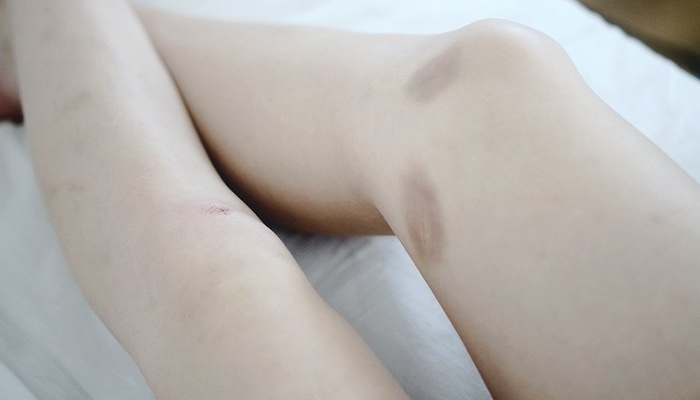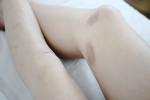
A bruised muscle, or muscle contusion, is an injury to your muscle fibers and connective tissues. It’s often associated with the muscles in your upper leg. In sports, a bruised muscle is the second-leading cause of sports injuries behind muscle strains.
Bruised muscles are typically caused by trauma or blunt force to a body part. This trauma crushes the muscle fibers but doesn’t break the skin tissue. In many cases, a bruised muscle is seen as a mild injury. In more severe cases, they can lead to serious tissue damage and complications.
Bruised muscles are often the result of blunt force or trauma to your body. This type of injury is most common in direct-contact sports. You can also bruise a muscle from a hard fall or collide with a hard surface.
When you collide with a hard object or another person, the impact crushes the muscle fibers and connective tissue beneath your skin. However, your skin doesn’t break from the blow. Damage to your muscle fibers can cause you to bleed beneath your skin and accumulate in the affected area. This often results in a sore bruise.
A muscle bruise doesn’t usually cause damage to the affected muscle. For that reason, athletes are physically able to play with mild bruising. In more severe cases, athletes may be forced to rest and limit physical activity until their muscles heal. This helps prevent a more serious injury.
Other than athletes, people most at risk also include elderly individuals.
What Does A Bruised Muscle Feel Like?
The most common symptom of a bruised muscle is pain. The pain is typically localized to the affected area.
In addition to pain, symptoms that may accompany a bruised muscle include:
- discoloration
- swelling
- worsened pain in days following the injury
- a knot at the injury site
- limited mobility
If your injury is more severe, you may have broken a bone or damaged internal organs. Bleeding or swelling beneath your skin can also cause shock. If you begin to experience worsening symptoms or if your injury shows no improvement, seek medical attention.
Serious muscle injuries left untreated could result in medical complications. Two of the more common complications include:
- Compartment syndrome. If you develop internal bleeding from an injury, the pressure can cause your tissue to swell. This is a painful and dangerous condition that can decrease blood flow to your muscle and nerve cells, leading to the death of the tissues and even potential loss of limb.
- Myositis ossificans. A deep muscle bruise or repeated trauma to the same muscle can cause your muscle tissues to harden and form bone. This complication can dangerously affect your range of motion.
Mild muscle injuries begin to heal within a few days. Your doctor may prescribe anti-inflammatory medication to reduce inflammation and swelling and to speed your recovery.
Your doctor may also recommend the RICE method:
- Rest. Protect your injury from further damage by stopping unnecessary physical activity.
- Ice. Apply ice to your injury to reduce pain, swelling, and bleeding. Don’t apply ice directly to the skin. Instead, wrap ice in a damp cloth or towel to protect your skin from ice burns. Apply ice for 20 minutes every two hours. Repeat this process for a few days following your injury.
- Compression. Wrap your injury with a bandage to provide additional support. This also prevents more bleeding and reduces swelling.
- Elevation. Elevate your injury above your heart level when at rest. This increases circulation and reduces swelling.
Mild muscle bruises respond to the RICE method within 24 to 48 hours. If you notice no signs of improvement, seek medical attention. This could be an indication of a more serious injury.
Your doctor may recommend physical therapy to increase mobility in more severe cases.
Recovering From A Bruised Muscle
Repeated blows to major muscle groups or trauma to parts of your body can result in mild bruising. These bruises are most common among athletes and elderly individuals. Recovery time can range between a few days to a few weeks.
Though many cases of muscle bruising heal on their own, more severe muscle injuries may require medical attention. If your symptoms don’t improve within a few days of developing the injury, see your doctor.
Precision Pain Care and Rehabilitation has two convenient locations in Richmond Hill – Queens, and New Hyde Park – Long Island. Call the Queens office at (718) 215-1888 or (516) 419-4480 for the Long Island office to arrange an appointment with our Interventional Pain Management Specialists, Dr. Jeffrey Chacko or Dr. Sonny Ahluwalia.













